Spray foam insulation is considered the best insulation for reaching areas that can't be easily reached otherwise; it has a high R-value and a high performance level. So what exactly is the R-value of spray foam insulation? We have done the research to answer that question.
There are two types of spray foam insulation—open cell and closed cell. The R-value of open-cell spray foam is 3.5-3.8 per inch, and the R-value of closed-cell spray foam is 6.5-7.0 per inch.
The cost of spray foam compared with other insulation options often deters homeowners from choosing this option, but it performs very efficiently and often reduces energy costs. In the following, we discuss more about spray foam insulation including how thick it should be, how long it takes to install, and how long it lasts. Without further ado, let's get into it!
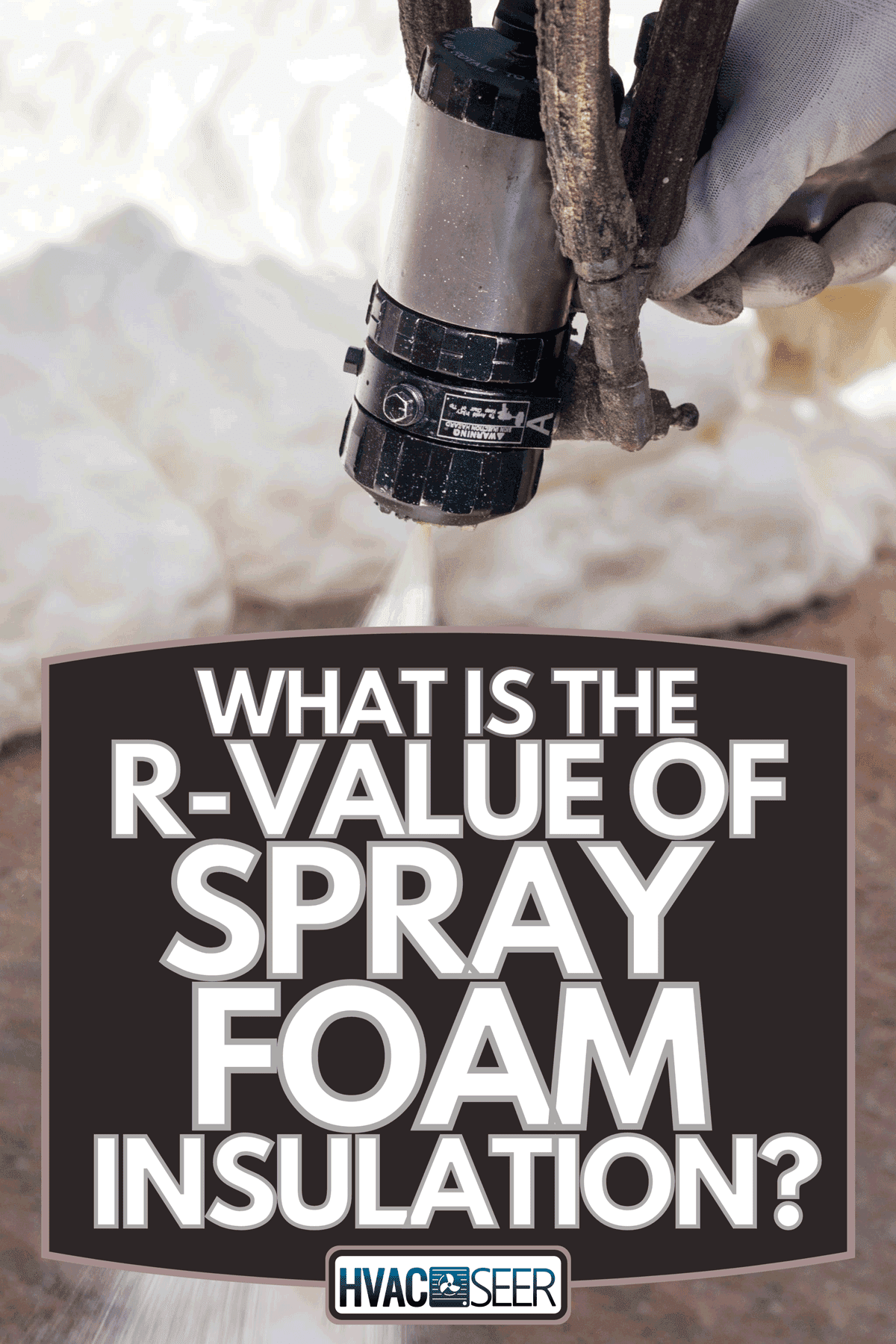
What exactly is R-value and how does it affect spray foam insulation installation?
All insulation has an R-value. Each area of the home has a different R-value requirement; this depends greatly on the climate in which you live. The R-value is defined as the capacity of an insulating material to resist heat flow.
The higher the R-value, the greater the insulating power. In other words, thermal performance is dependent on the R-value rating of insulation.
Federal guidelines for installation require spray foam insulation to be installed to the specific regulations for the climate. If the spray foam insulation is not installed with the proper R-value, then the insulation will not work at maximum capacity.
What are the different types of spray foam insulation?
There are two kinds of spray foam insulation: open cell and closed cell. Open cell is when the foam expands and the bubbles that form pop, and closed cell is when the bubbles don't pop. Open cell requires an additional vapor barrier, while closed cell does not.
Which type to use is based almost entirely on climate. According to Johns Manville, a leading manufacturer of spray foam insulation, in describing how to decide the type of spray foam to use, it can be summed up according to the following rule of thumb:
"...structures south of the southern border of Pennsylvania, use open cell, north of that border use closed cell. The reason for this is that the temperature deltas from the outdoor ambient temperature to indoor temperatures tend to be significantly smaller for structures located in the south than those located north."
The temperature delta is the change variance from outside to inside. In other words, warmer climates require less insulation, and colder climates require more.
How do you know if it's the right amount of spray foam insulation in your home?
According to whysprayfoam.org (the coalition of spray foam insulators), specific guidelines require how much insulation is necessary and what type to use.
These guidelines are vital to understanding the requirements for insulation to work properly in your area. One contractor explains that there are three main factors in determining how much spray foam insulation is needed and whether to use open-cell or closed-cell spray foam:
- Climate zone and insulation recommendations per federal guidelines for the area (R-value requirements).
- Where the insulation is being installed to prevent moisture from entering the home (attic, exterior walls, floors, basement/crawlspace).
- The degree of moisture permeability (a material's ability to resist water vapor).
If you are not sure what the proper R-values are for your area, check local requirements. A licensed contractor can likely provide a free estimate to check on proper insulation depths.
Make sure to get more than one estimate in order to compare answers and know that you are getting a fair deal if more insulation is needed.
What R-value is 2 inches of spray foam?
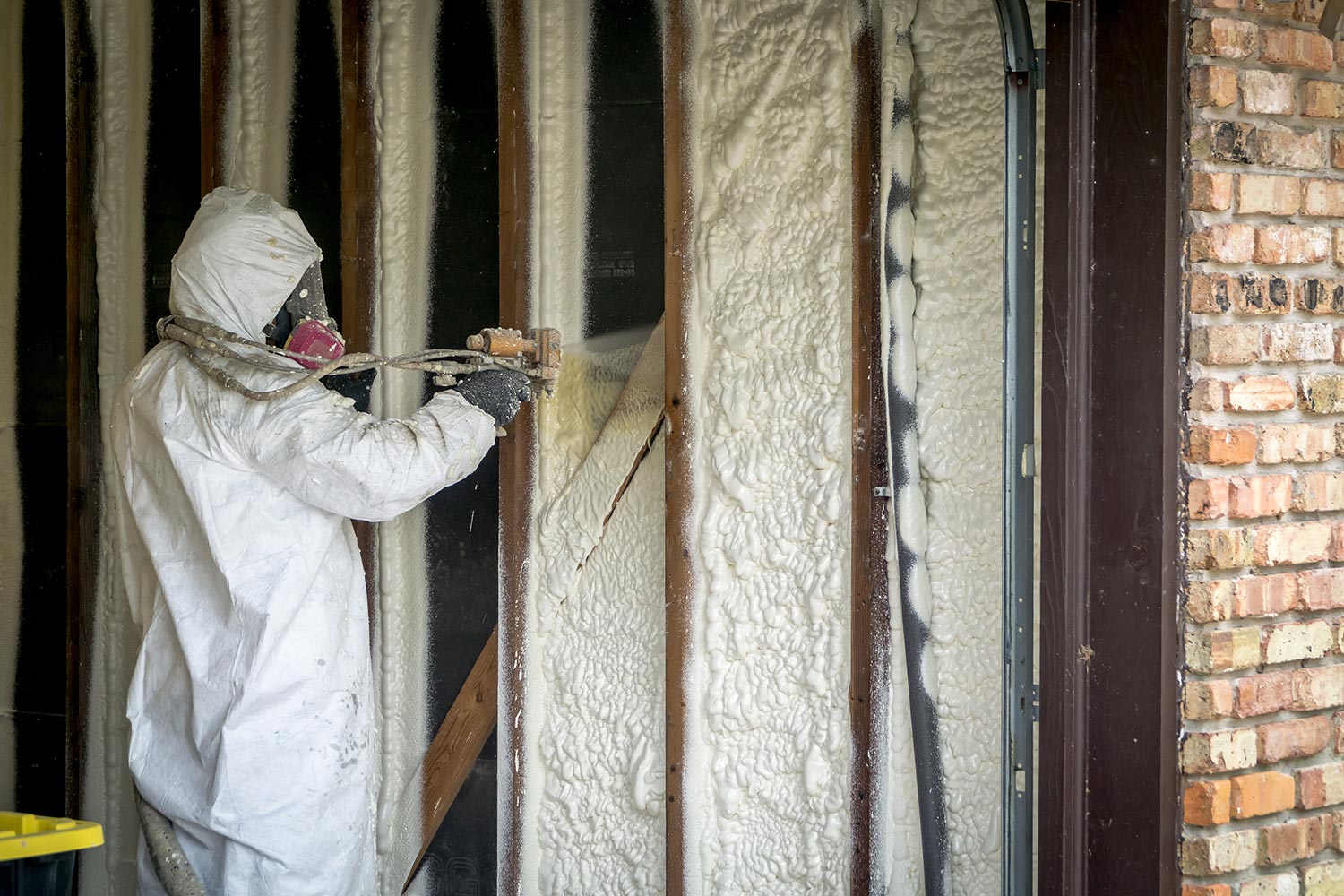
The R-value of two inches of open-cell spray foam is between R-7 and R-8. The R-value of two inches of closed-cell spray foam is between R-13 and R-14.
If trying to figure out if you have enough insulation with two inches, open-cell foam will be softer, and closed-cell tends to be firmer and harder to the touch. If you are unsure if you have enough spray foam insulation, it is best to check with a qualified professional who specializes in insulation.
Interested in adding spray foam insulation in an existing structure? Check out this post: Can Foam Insulation Be Installed In Existing Walls?
How thick should spray foam be?
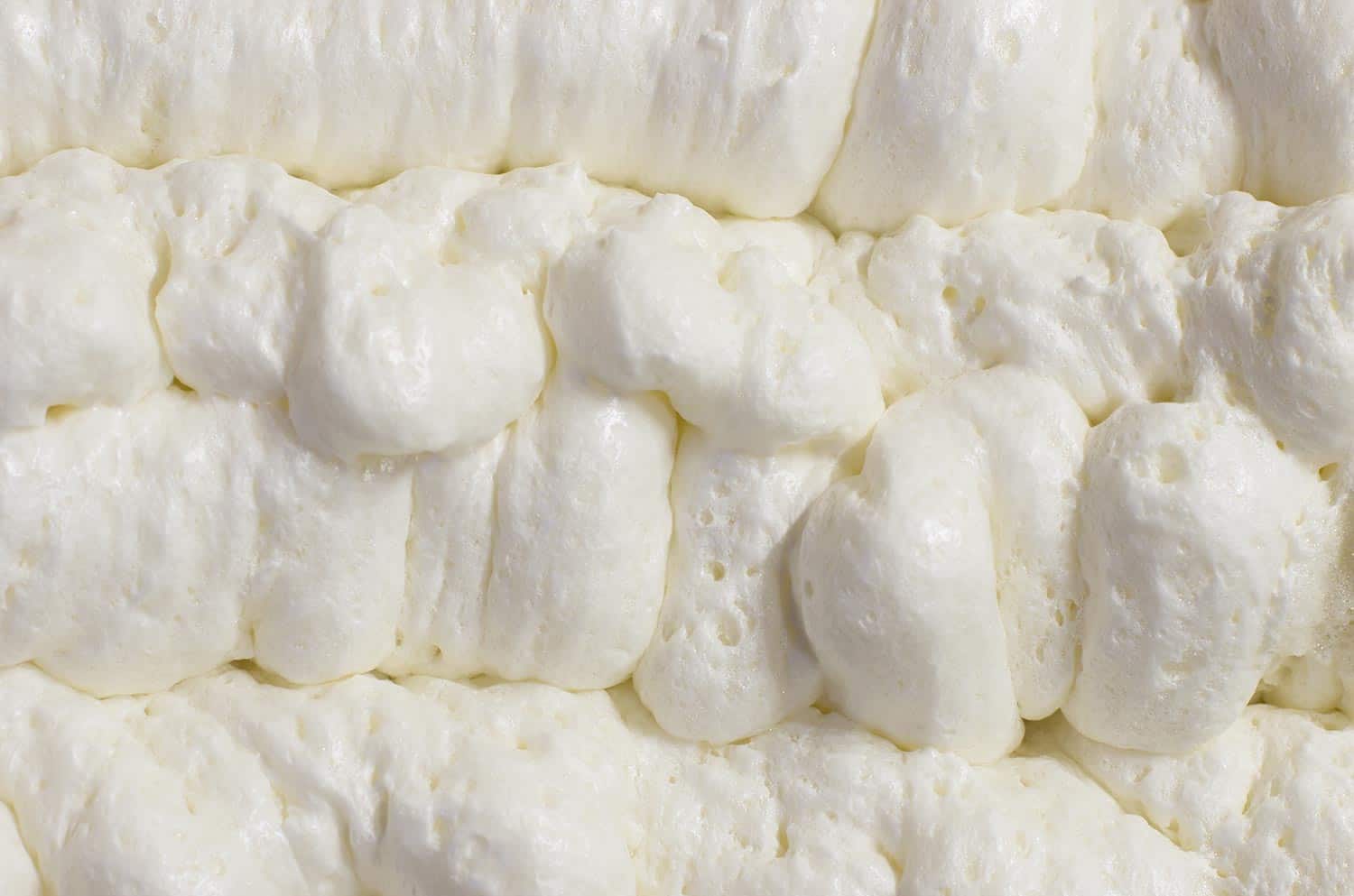
The thickness of the spray foam all depends on the R-value requirements in your climate zone and which part of the home you are insulating.
For exterior walls, the R-value ranges from R-13 to R-21 depending on the wall construction thickness (2x4 or 2x6) and the climate. This would require 2-6 inches of open-cell spray foam, while closed-cell spray foam would require 2-3 inches.
Regarding attics, the variance is greater depending on the climate zone at R-30 to R-60. This would require between 9-20 inches of open-cell spray foam and 4-9 inches of closed-cell spray foam. Please note that only closed cell would be used in climate zones requiring R-60.
For easy reference, Home Depot has provided an insulation R-values chart according to climate zones here.
Can I do spray foam insulation myself?
If you have ever watched spray foam insulation be installed, it looks like a simple job. But you must install insulation correctly or it doesn't work. Often, it costs less for a contractor to do it correctly the first time than to have to go back and fix something that is messed up.
Licensed contractors who specialize in spray foam have specific guidelines to follow to get proper coverage. In our opinion, a contractor is a safer choice. Make sure to get line-item estimates; this will help to dispel any confusion about what you are getting.
You can find a licensed contractor on the whysprayfoam.org website. This site pulls their list of qualified contractors from the Spray Polyurethane Foam Alliance Membership Directory.
On the other hand, if you do choose to do it yourself, you can purchase a DIY spray foam insulation kit online. You will want to wear a respirator and protective clothing because spray foam installation is a messy job.
Click here to see this spray foam insulation kit on Amazon.
If you decide to purchase a kit online or from a local retailer, read all specifications to make sure that the product has everything you need for your specific job.
Did you choose the DIY option and need some help with clean up? Check out this post: How To Get Foam Insulation Out Of Your Hands And Hair
How long does it take to spray foam insulate a house?
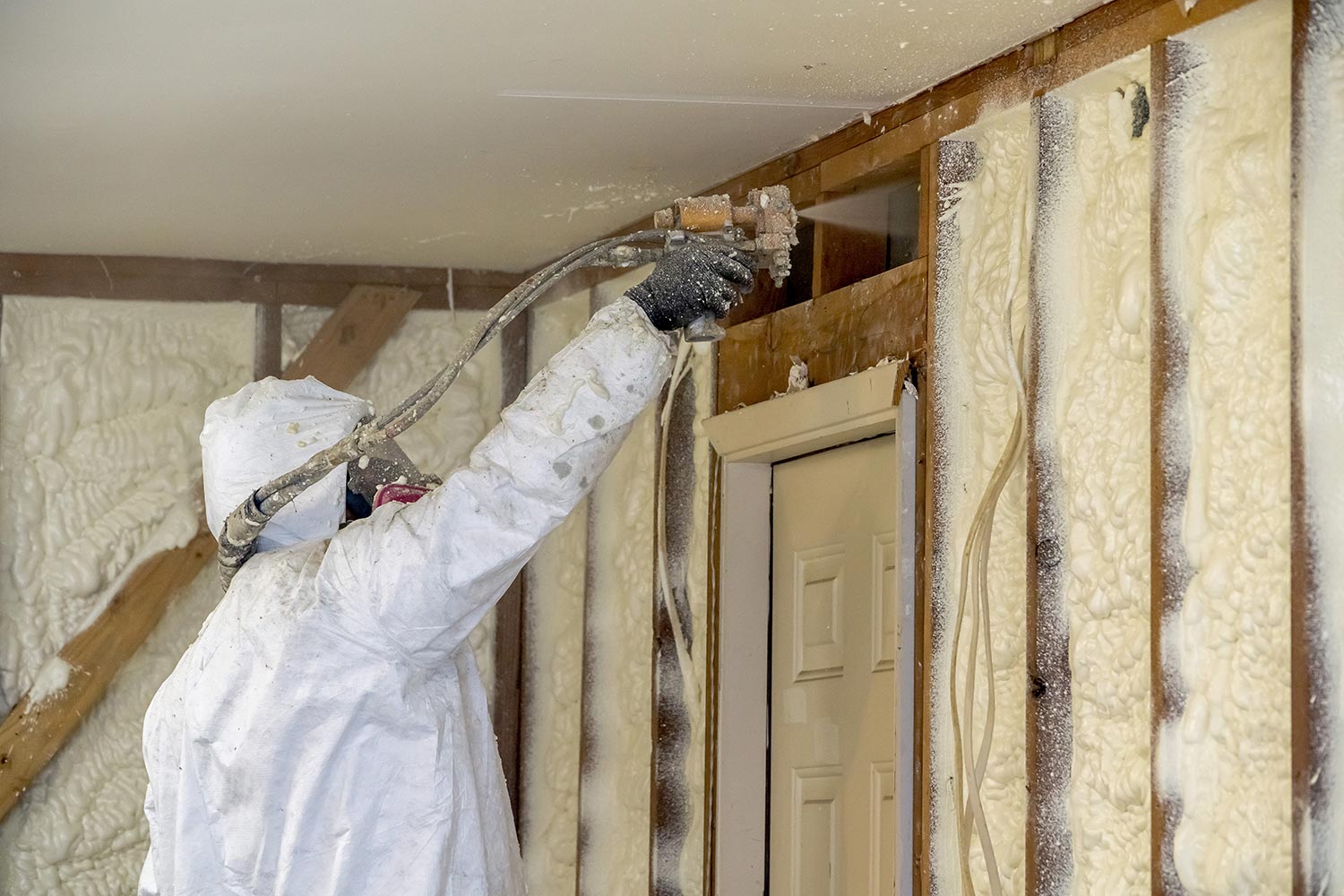
Depending on the size of the home, spray foam insulation can usually be completed in 1-3 days. It takes about 24 hours to fully cure.
A licensed contractor who is fully experienced in spray foam insulation installation will be the most efficient choice.
Keep in mind that you will want to account for enough time to get bids (most experienced contractors can work directly from architectural plans and do not need to come to the home for an estimate) and give the contractor enough time to fit you into his schedule.
In new construction, insulation should not be installed until the roof is complete and must be installed before drywall is put up. Proper planning and communication with all contractors is the best approach for a timely and positive project outcome.
How long does spray foam insulation last?
Spray foam insulation has a lifespan of over 30 years. It was first used in the 1980s, and the product continues to be improved over time. Unlike alternative forms of insulation, it won't sag or settle over time; once it is installed, it stays in place.
Is spray foam good for attic insulation?
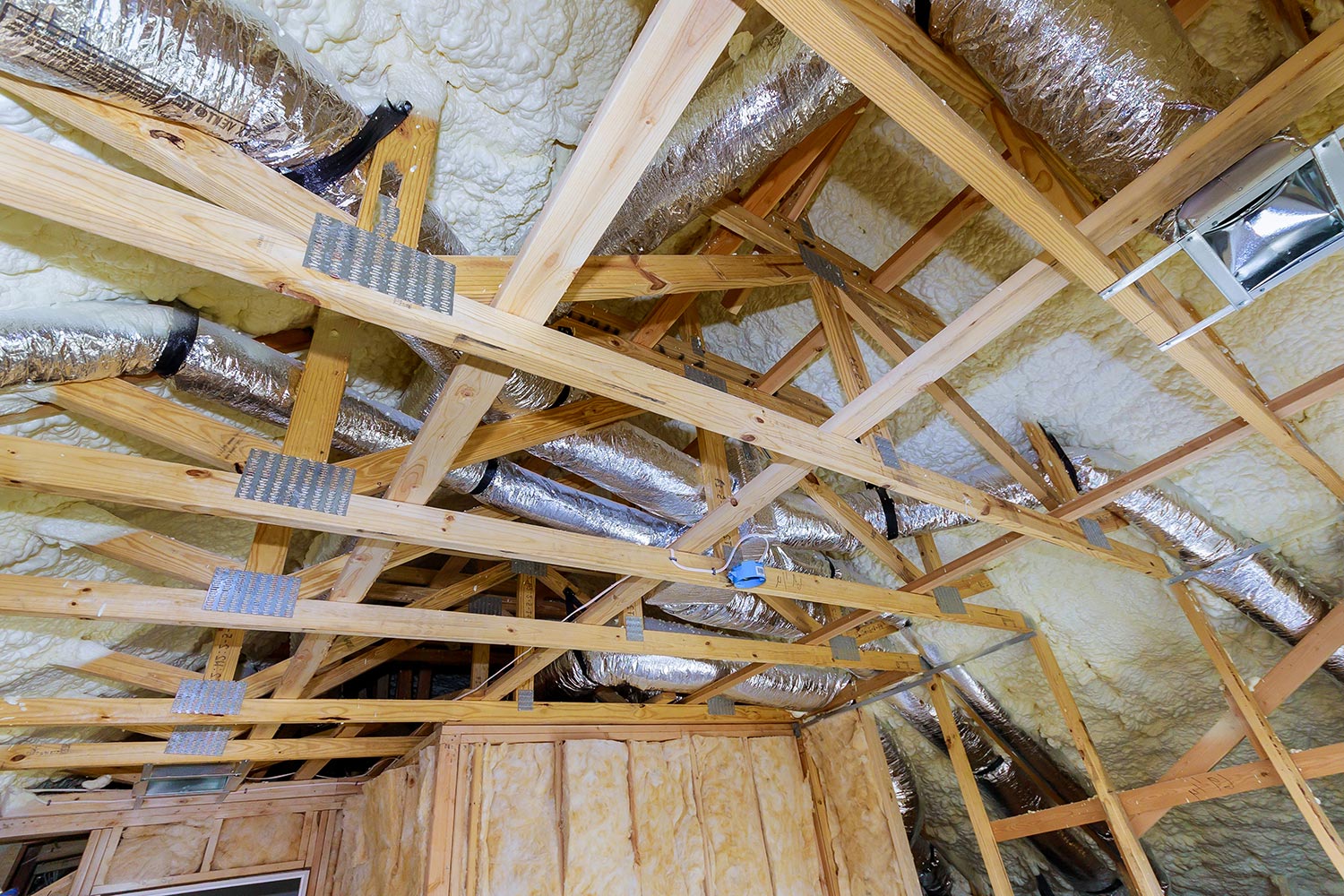
Yes, spray foam is a good choice for attic insulation. It penetrates hard-to-reach areas and provides a vapor barrier (if closed cell is used). It also has a superior air barrier to other forms of insulation.
In addition to these benefits, spray foam insulation is the only insulation choice that is capable of improving the structure of the home because it works as a glue that reinforces the structures where it is placed. This ultimately strengthens the roof itself.
In Closing
In conclusion, spray foam insulation has a reputation for high cost; however, its performance is often worth the price.
If you can afford the upfront costs, the saving in your heating and cooling bills will quickly make up the difference. Always be aware of local requirements for R-values, and use a licensed and insured contractor.

